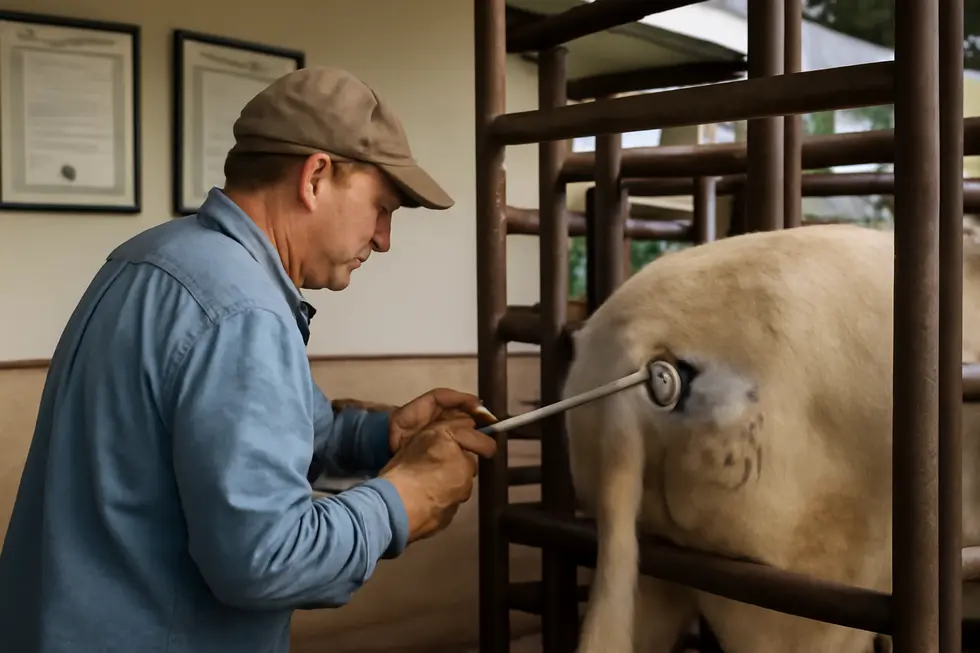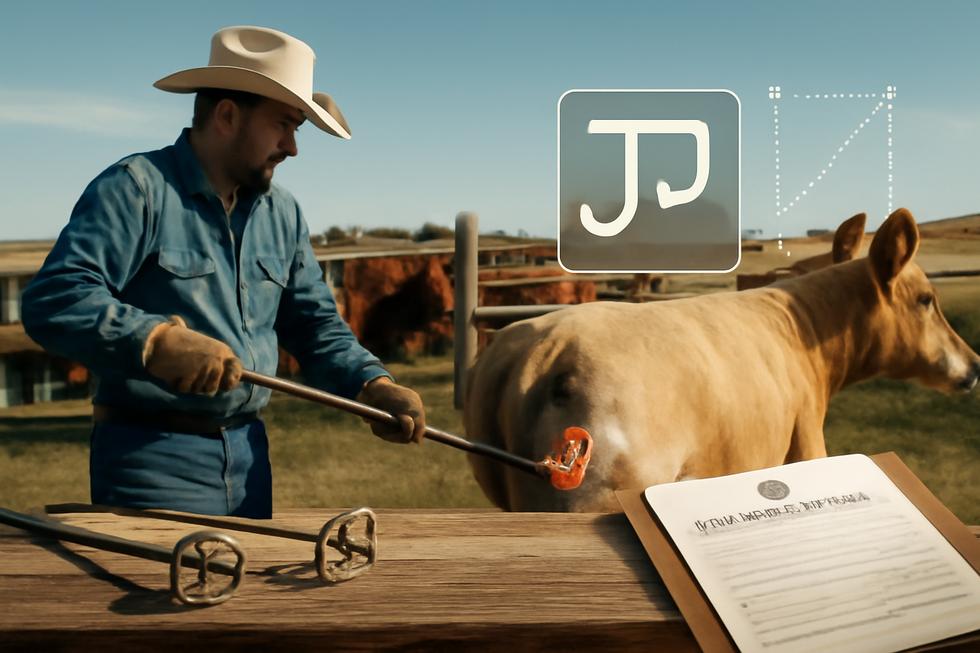Introduction
Livestock branding plays a crucial role in protecting the ownership and identity of animals on a commercial scale. For business owners in the agricultural sector, understanding how to properly design, register, and legally use a livestock brand is vital to safeguarding assets and maintaining operational clarity. This guide delves into each critical stage, beginning with designing a unique and compliant brand, followed by navigating the application and registration process. It further explains the necessary waiting periods and approval procedures, clarifies ownership rights tied to legal usage, and explores the advantages of digital branding and additional services. Each chapter equips you with essential insights to ensure your livestock brand is legally recognized and fully protected in your jurisdiction.
Tables of Contents
Chapter 1: How to Get a Livestock Brand: Designing a Unique and Compliant Brand
- Crafting a Distinctive Livestock Brand: From Creative Design to Legal Registration
- Mastering State-Specific Regulations to Secure Your Livestock Brand Legally and Uniquely
Chapter 2: How to Get a Livestock Brand: The Application and Registration Process
- Crafting and Filing Your Livestock Brand: Navigating Design and Registration with Confidence
- Securing Legal Ownership: The Essential Steps of Livestock Brand Approval and Certification
Chapter 3: Navigating Waiting Periods and Approval Procedures to Secure Your Livestock Brand
- Mastering the Design and Application Steps: Ensuring Timely Approval of Your Livestock Brand
- Understanding Livestock Brand Approval, Mandatory Waiting Periods, and Legal Usage Guidelines
Chapter 4: How to Get a Livestock Brand: Legal Use and Ownership Rights
- Crafting and Securing Your Livestock Brand: From Unique Design to Official Registration
- Securing Ownership: Legal Safeguards and Brand Inspections for Livestock Branding
Chapter 5: How to Get a Livestock Brand: Digital Branding and Additional Services
- Navigating Legal Registration and Digital Protection of Your Livestock Brand
- Harnessing Digital Branding and Marketing to Elevate Your Livestock Brand
Chapter 1: How to Get a Livestock Brand: Designing a Unique and Compliant Brand

1. Crafting a Distinctive Livestock Brand: From Creative Design to Legal Registration
Creating a livestock brand that stands out and holds legal weight begins with designing a mark that is both unique and compliant with regulatory standards. This mark can be a letter, number, symbol, or a combination, but its key characteristic must be distinctiveness to unequivocally identify your livestock and protect your ownership rights. To achieve this, your design must avoid duplication or close similarity to existing brands recorded in your state or local registry. Such uniqueness prevents potential disputes and ensures your application is accepted.
Besides creativity, it’s essential to consider practical application methods such as hot iron branding or other approved humane techniques, which the design should accommodate to ensure clarity once applied. The placement of the brand on the animal is also strictly regulated. Different states set specific requirements regarding position and size, aiding consistent identification and inspection. For example, some states mandate brands to be located on particular body parts, which you must specify during registration.
Once your design is finalized, you submit it to the relevant state authority, commonly the Department of Agriculture or an equivalent agency. This submission includes a clear facsimile of the brand and precise details about its location on the animal. A thorough review process then begins to confirm the brand’s distinctiveness and adherence to local laws, which vary by region.
Upon approval, your brand is entered into an official registry, granting you exclusive legal rights to use it on your livestock. This record serves as evidence of ownership and a tool for enforcement against unauthorized use. Many jurisdictions require brand inspections when livestock ownership changes, moves across regions, or heads to slaughter, emphasizing the brand’s role as a secure and regulated identifier.
For those seeking further protection, trademarking the brand design can extend its coverage beyond livestock identification, shielding it as intellectual property in broader commercial settings. This approach complements the registration process, offering an added safeguard against imitation.
Designing and legally registering your livestock brand is more than an artistic task—it is a critical legal safeguard that ensures your mark is distinct, respected, and enforceable, underpinning your rights within the agricultural community. For more insights on protecting your brand identity beyond registration, explore guidance on trademark protection for business names and logos.
2. Mastering State-Specific Regulations to Secure Your Livestock Brand Legally and Uniquely
Designing and registering a livestock brand requires more than creativity; it demands strict adherence to the regulations governing branding in your region. Each state or territory enforces its own specific rules regarding brand design, registration, and usage to ensure clear identification and protect livestock ownership rights. This system prevents conflicts and guarantees each brand is uniquely tied to its owner.
When designing your brand, you must create a mark that is both distinctive and compliant with your state’s criteria. This may involve size requirements—such as Ohio’s minimum height for brands—and restrictions on symbols or combinations to avoid duplication of existing brands. Many states offer online brand registries where you can check whether your intended design is available, helping prevent rejection during registration.
The registration process typically involves submitting a detailed application, including a drawing or exact description of your brand, personal identification, and applicable fees. State agencies, often the department of agriculture or a livestock board, thoroughly review applications to confirm that the mark meets regulatory standards and is not already in use. Successful registration results in your brand being officially recorded and a certificate issued as legal proof of ownership.
Beyond initial registration, some jurisdictions require ongoing compliance such as annual renewals or usage verifications to keep your brand active. Failure to comply could lead to deactivation or loss of brand rights. Given these nuances, consulting local agricultural authorities or legal experts familiar with livestock branding laws is highly advisable to navigate the process smoothly and correctly.
This attention to detail not only secures your legal rights but also upholds the integrity of livestock identification within agricultural communities worldwide. For those needing additional guidance on protecting business-related marks, exploring the connection between branding and intellectual property can be insightful, as discussed in resources like trademark protection for business names and logos.
Chapter 2: How to Get a Livestock Brand: The Application and Registration Process

1. Crafting and Filing Your Livestock Brand: Navigating Design and Registration with Confidence
Designing a livestock brand is a crucial step toward securing legal ownership and protecting your animals. This process begins with creating a unique, easily identifiable mark—often a combination of letters, numbers, and symbols arranged in a distinctive pattern. The brand must clearly stand out to prevent confusion with others registered in your state or region. Because regulations vary widely, researching existing brand registries in your area is essential to ensure your design does not conflict with any registered mark. This early diligence helps avoid costly disputes and registration denials.
Once you have a distinctive design, the next step is preparing your application. Obtain the official livestock brand application form from the relevant authority, typically a state agriculture department or brand registry office. Your application should include not only your brand’s visual design but also specify exactly where on your livestock you intend to apply the brand—common locations include the hip, shoulder, or rump. Accurate owner information must accompany this submission. Many states require a clear drawing or digital image to make the review process precise and efficient.
Submission involves sending your completed application along with the appropriate fees, which vary by jurisdiction. Payment options often include checks, money orders, or electronic methods, depending on your local system. Some states may require notarization or additional paperwork, so check local instructions carefully. The review period can range from several weeks to over a month while officials verify the brand’s uniqueness and compliance.
When approved, you will receive official certification confirming your brand registration. This document grants you legal right to brand your livestock and safeguards your ownership. Maintaining records of your brand use is critical for enforcement and renewal purposes. If questions arise about design legality or registration nuances, consulting with a livestock branding expert or legal counsel can provide clarity. This streamlined approach ensures your brand is both distinctive and recognized, protecting your investment within the livestock community.
For further guidance on intellectual property concerns related to business names and marks, see resources on trademark protection for business names and logos.
2. Securing Legal Ownership: The Essential Steps of Livestock Brand Approval and Certification
Obtaining legal ownership of a livestock brand involves a careful and regulated process governed by state authorities. This process ensures your brand is uniquely identifiable, protects your livestock ownership rights, and prevents disputes over ownership. It begins with submitting a comprehensive application to the designated agency, typically the state department of agriculture or a specialized brand board. Your application must include a clear depiction of the brand, specify the livestock species it applies to, and indicate the exact location on the animal where the brand will be placed. These details are crucial to establishing a distinct and non-confusing mark.
Once submitted, the application undergoes rigorous review to guarantee that the proposed brand does not resemble existing registered marks. Distinctiveness is paramount, as many states enforce strict prohibitions on recording brands that are identical or confusingly similar to others. This step helps maintain clarity in ownership and reduces potential legal conflicts. For example, Ohio’s regulations make clear that no duplicate or similar brand may be registered, while Texas records brands at the county level and electronically shares the information with the Texas Animal Health Commission to enforce this uniqueness.
After approval, the brand enters the official state registry and the owner receives certification. This certificate serves as legal proof of ownership and includes a facsimile of the registered brand. Possessing this document is essential for defending your rights in ownership disputes and for verifying livestock identification during sales, transportation, or inspections.
Furthermore, recorded brands may only be applied using approved humane methods, such as hot iron branding or other state-sanctioned techniques. Unauthorized use of a registered brand is prohibited and can lead to legal action. Because requirements and fees can vary widely, it is important to consult your local agricultural authority for specific guidance and forms.
This legally recognized registration process is foundational in protecting your livestock assets and ensuring your brand remains a unique, enforceable symbol across your agricultural community. For more details on related intellectual property protections, including distinctions from trademarks, see this overview of trademark protection for business names and logos.
Chapter 3: Navigating Waiting Periods and Approval Procedures to Secure Your Livestock Brand

1. Mastering the Design and Application Steps: Ensuring Timely Approval of Your Livestock Brand
The journey to securing a livestock brand begins with crafting a clear and unique design that meets the regulatory standards of your jurisdiction. Each state or region establishes specific criteria, such as size and distinctiveness, which your brand must satisfy to avoid legal conflicts. For example, in Ohio, brands need to be a minimum of three inches tall, underscoring the importance of adhering to such specifications early in the process. Whether created independently or through professional services, the brand design must stand out from any previously registered marks to guarantee exclusive ownership rights.
After finalizing your design, the next critical step involves submitting your application to the designated authority—this might be a Department of Agriculture, County Clerk, or a related agency depending on your location. This submission includes your brand design along with owner details, forming the official record that initiates the review cycle.
Authorities then conduct a careful examination to confirm the brand’s uniqueness and compliance with local laws. This review prevents duplication and confusion, ensuring that your ownership remains uncontested. In places like Texas, the brand recording happens at the county level, with electronic verification shared statewide, highlighting the integration of modern systems in traditional processes.
The waiting period emerges during this review—often stretching from several weeks to a few months—while officials verify compliance and resolve potential objections. Understanding this interval helps applicants prepare for timing expectations and plan livestock branding schedules accordingly.
Upon approval, you receive an official certificate containing a facsimile of your brand, serving as legal proof of ownership. Some regions also require branding by a certain livestock age, such as Texas’s mandate to brand cattle by one year old, anchoring the importance of punctual compliance.
Because state-specific rules vary considerably, consulting local authorities before applying ensures you meet all requirements efficiently. Exploring resources like the Ohio Department of Agriculture can provide valuable insight into regional procedures. For additional support, professional digital design services simplify the creation and submission of compliant brands, smoothing the path from concept to certification.
For guidance on intellectual property aspects closely linked to livestock branding, consider reviewing information on trademark protection for business names and logos, which shares principles relevant to safeguarding your unique mark.
2. Understanding Livestock Brand Approval, Mandatory Waiting Periods, and Legal Usage Guidelines
Securing approval for a livestock brand involves a careful review to ensure your design is original and complies with state or regional regulations. The approval authority—often a department of agriculture or equivalent—examines your proposed brand to prevent confusion with existing ones. Only once a brand clears this scrutiny is it officially recorded in a centralized registry, accompanied by a certificate confirming ownership rights.
Typically, the waiting period between submission and approval varies but generally spans several weeks. This timeframe allows the authority to check for conflicts and legal compliance thoroughly. While exact durations differ by location—for instance, some states may not specify fixed review periods—the process often resembles other certification reviews lasting four to six weeks.
Legal use restrictions are strictly enforced; only officially registered brands can be applied to livestock. Any use of an unregistered or confusingly similar mark risks legal penalties. Standards such as minimum size requirements exist to maintain clear visibility and distinctiveness—Ohio mandates cattle brands be at least three inches tall, for example. Additionally, regular brand inspections occur during ownership transfers, interstate movements, or prior to livestock slaughter. These inspections help uphold brand integrity and confirm rightful ownership.
Proof of ownership granted by the certificate is vital for enforcement. Unauthorized use or tampering may lead to fines or misdemeanor charges, ensuring owners’ rights remain protected and disputes avoided. Familiarizing yourself with your state’s specific regulations will help you navigate these timelines and legal obligations effectively.
For detailed guidance on compliant designs and registrations, reviewing trusted intellectual property resources can be invaluable to protect your brand fully.
Chapter 4: How to Get a Livestock Brand: Legal Use and Ownership Rights

1. Crafting and Securing Your Livestock Brand: From Unique Design to Official Registration
Securing a livestock brand begins with designing a distinctive mark that clearly establishes your ownership and complies with state or regional requirements. The brand design can consist of symbols, letters, or numbers, applied individually or combined to create a unique visual identifier. Crucially, this design must be original and not resemble any existing registered brands within your jurisdiction to prevent legal disputes and ensure exclusive rights. Legal branding methods commonly include hot iron, freezing, or acid application, all of which create a permanent mark recognized by authorities.
Once your design is finalized, the next essential step involves registering the brand with the designated governmental agency, often tied to the state department of agriculture or the local county clerk. Your application typically needs to include detailed information about the brand design, the intended placement on the animal, and your ownership credentials. Processing times and fees vary by location; for instance, in Queensland, Australia, brand registrations may take around 40 working days after submitting an application via email, while in Ohio, registration results in an official certificate of ownership. Texas law requires filing the brand with the county clerk and electronically notifying the Texas Animal Health Commission to maintain updated records.
After official registration, you gain exclusive rights to use your brand, making it legally enforceable against unauthorized use by others. It also becomes a transferable property right, allowing for selling or leasing in accordance with local regulations. Many jurisdictions mandate that livestock be branded before sale or relocation, reinforcing the brand’s role in ownership verification and theft prevention. Staying compliant includes maintaining updated ownership records and responding to any additional state requirements, such as periodic renewals or notifications.
Beyond livestock identification, consider protecting your brand’s identity further by exploring trademark registration and other business protections. This adds a comprehensive layer of legal security over your brand’s use within commercial contexts. For more details on extending brand protection beyond livestock, the resource on trademark protection for business name and logo offers valuable insights.
Ultimately, designing and registering a livestock brand is a critical step that safeguards your property, ensures legal clarity, and supports the integrity of agricultural communities worldwide.
2. Securing Ownership: Legal Safeguards and Brand Inspections for Livestock Branding
Securing Ownership: Legal Safeguards and Brand Inspections for Livestock Branding
Obtaining a livestock brand goes beyond creating a distinctive design; it requires navigating robust legal protections to secure ownership rights and ensure proper usage. The foundation of these protections lies in registering your brand with the appropriate authority, such as a state department of agriculture or a county clerk. This process mandates submitting an exact representation of your brand alongside owner details and specifying the precise location where the brand will be applied on the animal. Brands applied outside their registered locations are considered unauthorized, undermining legal ownership claims.
Ownership of a livestock brand is legally recognized only after formal registration, and transferring this ownership must follow strict legal protocols. Sales or leases of brands cannot be informal; they require official documentation comparable to that used in real estate transactions. This ensures clear title and prevents disputes by recording exactly who holds the rights to the brand at any given time.
To enforce these protections, brand inspections play a critical role. Typically, these inspections occur during the sale or movement of livestock, where authorized inspectors verify that animals bear the correct, registered brands. This verification process includes issuing brand inspection certificates, which affirm lawful ownership and compliance. Failing to adhere to inspection requirements can result in penalties ranging from fines to misdemeanor charges, underscoring the legal weight of brand regulations.
Together, registration, formal transfer methods, and brand inspections form a comprehensive legal framework. This framework protects ranchers by clearly defining ownership, deterring theft, and maintaining order within the livestock industry. For those seeking to understand the landscape of intellectual property protections related to unique identifiers, complementary insights can be found in detailed discussions about trademark protection for business names and logos.
By carefully following these legal safeguards, livestock owners ensure their brands serve as powerful symbols of ownership, backed by enforceable rights and supported mechanisms for accountability.
Chapter 5: How to Get a Livestock Brand: Digital Branding and Additional Services

1. Navigating Legal Registration and Digital Protection of Your Livestock Brand
Securing your livestock brand starts with an official registration process that establishes your legal ownership and protects your mark from unauthorized use. This process requires submitting a unique design—often a combination of letters, symbols, or numbers—to the relevant state authority, such as the department of agriculture or county clerk’s office where your animals are located. Each state maintains a brand registry to record these designs, verifying that your proposed brand is distinctive and not confusingly similar to any existing mark. Approval culminates in a certificate of ownership, granting you exclusive rights to use your brand for identifying your livestock.
The physical application of your brand must comply with state regulations, including specifying the exact location on the animal where the brand will be placed. Rigorous examination procedures ensure clarity and prevent disputes among owners. For instance, in some states like Texas, the brand is recorded locally and then electronically shared with the animal health commission to support traceability and enforcement. Similarly, in Ohio and Queensland, Australia, adherence to centralized registration protocols ensures your brand’s legitimacy.
Beyond physical branding, protecting your livestock business’s identity in the digital realm enhances your overall brand security. Digital branding involves registering logos or related trademarks with the United States Patent and Trademark Office (USPTO), safeguarding your corporate identity from infringement in commerce. This trademark process requires a thorough search to confirm logo uniqueness, submitting detailed applications, and often engaging specialized legal counsel to navigate USPTO requirements effectively. Coupling state livestock brand registration with trademark registration creates a robust shield around both the physical and digital facets of your brand.
For livestock producers who also establish formal business entities, additional steps include registering your business name with the state, appointing a registered agent, and obtaining necessary licenses and federal identification numbers. These measures complement your brand protection strategies, ensuring full legal compliance and streamlined operations.
Together, official livestock brand registration and digital trademark protection offer comprehensive security and legal recognition, maintaining the integrity of your livestock identification system while extending your brand’s reach and enforcement in all related markets. For more insights into securing your digital brand presence, consider resources on trademark protection for business names and logos.
2. Harnessing Digital Branding and Marketing to Elevate Your Livestock Brand
Modern livestock branding extends beyond physical marks to embrace digital transformation and marketing strategies tailored specifically for the agriculture sector. Once a unique livestock brand is designed and registered, digitizing this physical mark into versatile digital formats—such as SVG, AI, or PNG—is a crucial next step. This conversion ensures your brand retains clarity and consistency when used on digital platforms, printed materials, merchandise, and promotional collateral.
Creating a dedicated website further enhances your brand’s visibility and storytelling power. A responsive, professionally developed site serves as a hub to showcase your livestock, outline your farm’s heritage, and detail your products or services. Integrating breed-specific or agricultural data can enrich the visitor’s experience and solidify your expertise. Maintaining an updated digital presence, complete with domain and email management, helps establish credibility and improves customer engagement.
Specialized digital marketing services play a vital role in amplifying your livestock brand. These agencies apply targeted strategies such as social media outreach, content creation, search engine optimization, and paid advertising tailored for agriculture audiences. Sharing compelling stories, educational content, and visual media across platforms like Instagram and Facebook builds brand awareness and fosters a loyal community. Additionally, direct marketing through email and SMS nurtures customer relationships and drives sales.
Beyond basics, marketing professionals offer brand consulting, performance analytics, lead generation, and influencer partnerships—all crafted to maximize your brand’s reach within agricultural networks. Employing these services ensures your livestock brand is not only legally protected but also professionally represented and competitive in today’s digital marketplace.
For those seeking comprehensive guidance, exploring branding strategy and intellectual property protections in the agricultural industry can provide valuable insight and confidence during this digital evolution.
Final thoughts
Securing a livestock brand is an essential step for agricultural business owners who need to protect their livestock and affirm ownership legally. From the initial design stage through to registration, approval, and legal use, each step requires careful attention to detail and compliance with local regulations. Moreover, integrating digital branding technologies offers enhanced precision and modern solutions to support identification and asset protection. By following the outlined process and understanding your rights and responsibilities, you ensure your livestock brand stands legally recognized and serves as a reliable tool to deter disputes and unauthorized use, ultimately safeguarding your business investments.
Your IP is the foundation of your success – let’s protect it together before it’s too late. We can’t wait to help you turn your ideas into legally secured assets.
About us
undefined


